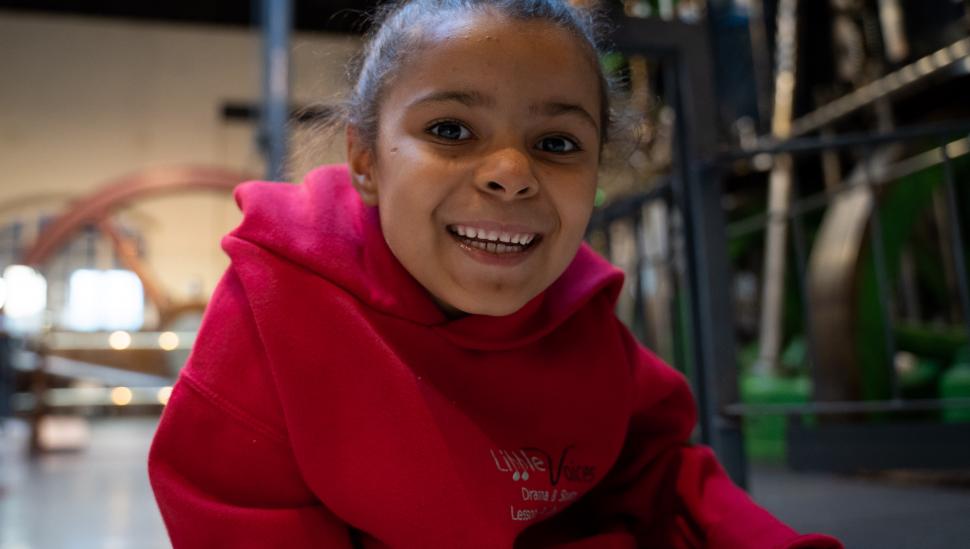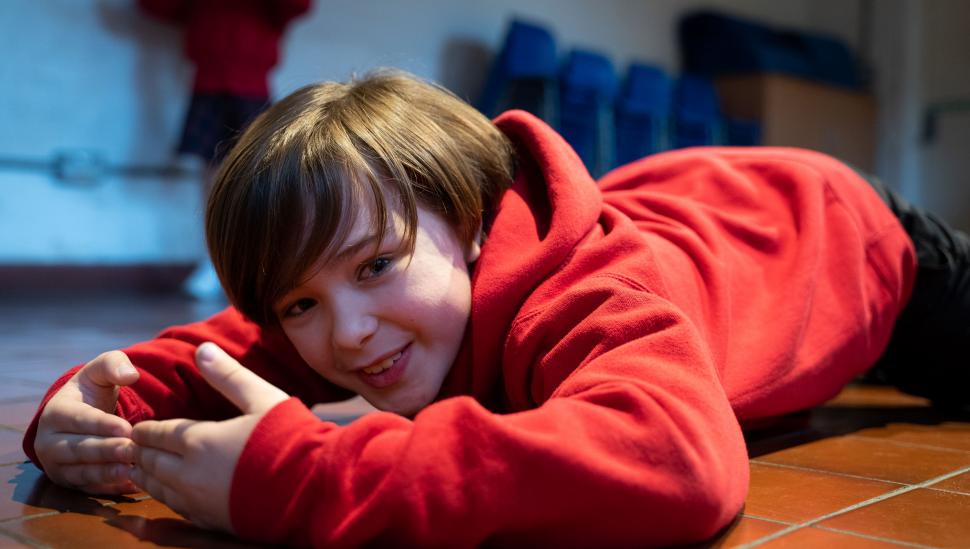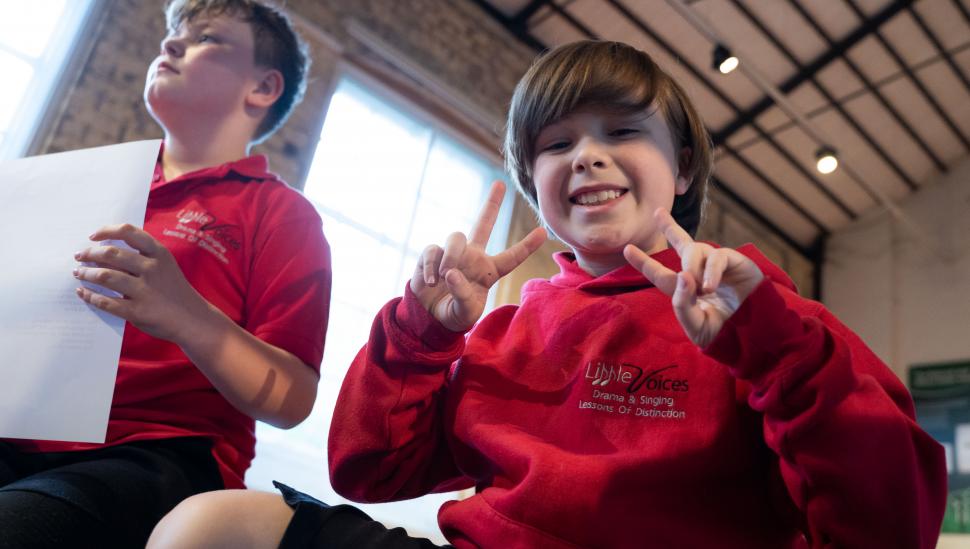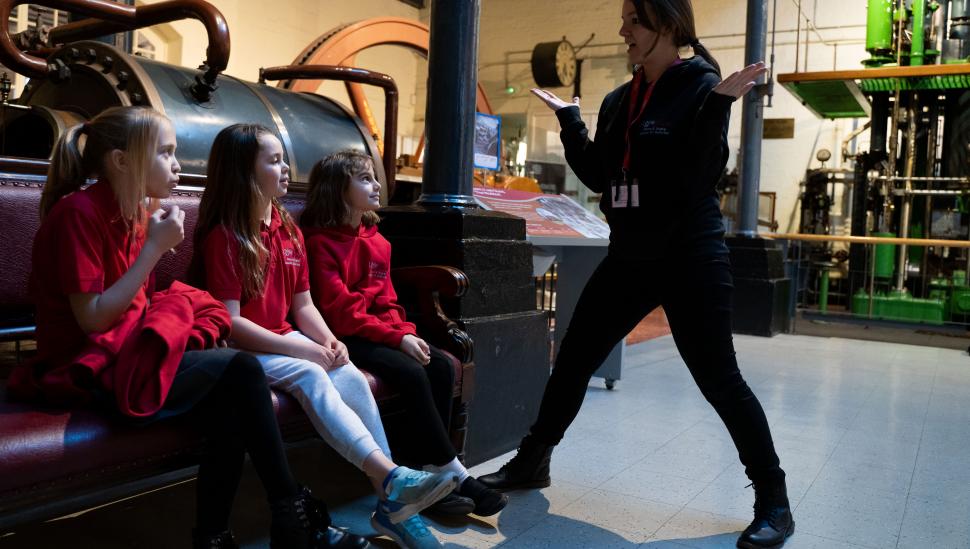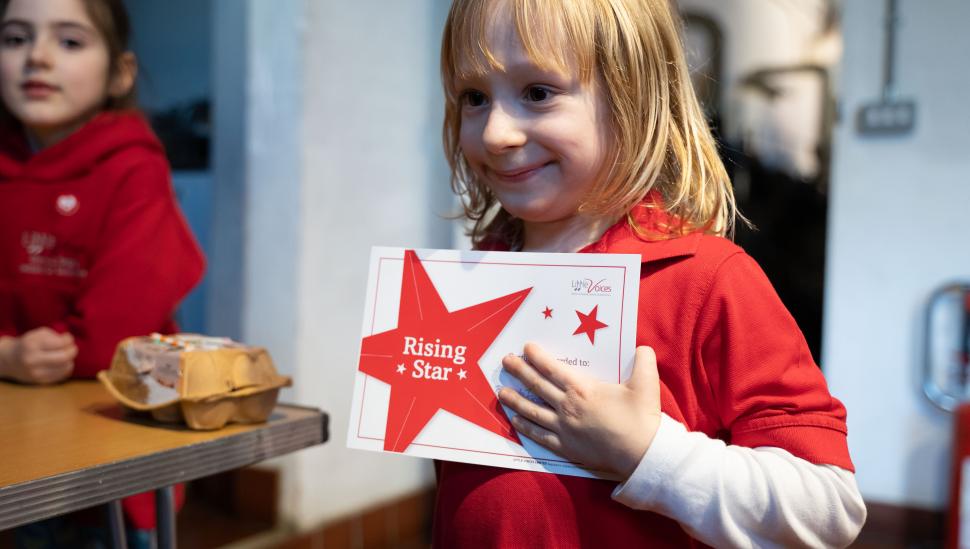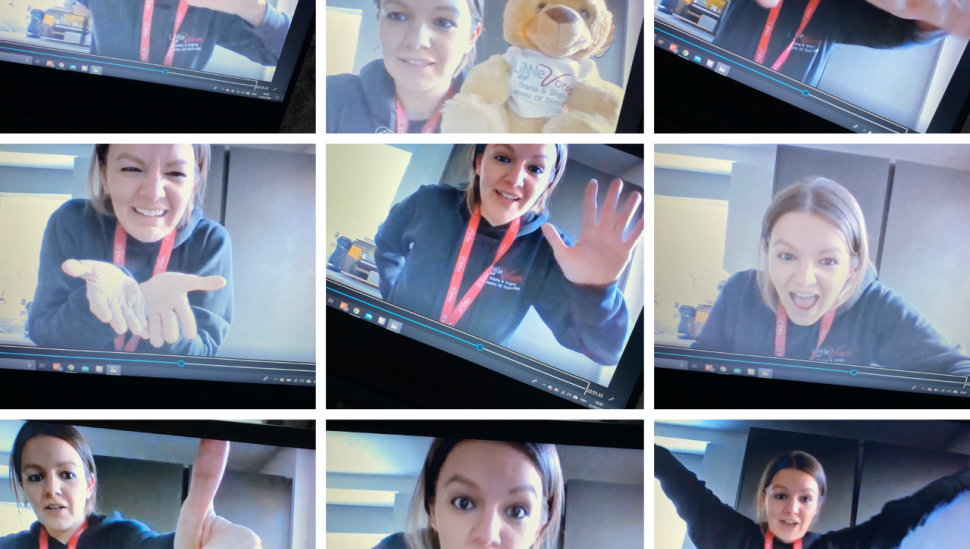Behind the Screens: Interview with Little Voices' Jemma Bird
With COVID-19 having completely changed the way we live and work, we are keen to find out how teachers are handling the challenges of working from home. Starting off a new series, we speak to Jemma Bird, principal of Little Voices Kew Bridge.
It’s hard to believe now, but it’s barely four weeks since I visited Jemma’s class at the London Museum of Water and Steam. We were there for a photoshoot, taking pictures of her fun-filled, high-energy lessons found amongst the old steam engines in a converted Victorian waterworks. Since then, theatres have gone dark, schools have closed and the entire country has been placed on lockdown.
Where is she teaching from now? “I’m based at my dining table,” she laughs. “In my kitchen.”
And by the sounds of it, she is completely surrounded by tech. “I have my laptop, which is running different classes, then I have an iPad, this is set up with a different drama or singing class as well. Because we usually run two classes at the same time, and we wanted to keep the routine regular. My tutor is in one group teaching her class, and I’m in the other, teaching another.
“I have the laptop ready, the iPad ready, and I’ve also worked out that I also need a backup, just in case the laptop stops working, which has happened in the past.”
Jemma is a principal within the Little Voices network. They were quick to make the move into virtual classrooms via their own system, LV Connect. “It’s something that Little Voices has been working on for a while now, luckily,” she tells me.
“It was slowly rolling out, but Jane [Maudsley, the founder of Little Voices] spotted that this problem was going to occur, and she was very proactive and said ‘this is what we need to do.’”
And so they did it. Transporting lessons online, with only 24 hours’ notice.
“It was quite hard going, having to get all the parents signed up and sorted, knowing what to do and how to access it.
“I spent a good few hours with my tutor troubleshooting it, to make sure what we had was of good quality and checking if there’s any problems.”
Then there was the matter of helping the parents set up. A flurry of emails and text messages were sent to help them out. “I’ve been doing step-by-step emails and also screen recording videos.”
That was three weeks ago.
I ask her if there have been any difficulties.
“One thing I found, which I knew from troubleshooting, was the quality of the sound coming through the speakers and making sure what we had was adequate to hear our pupils.” Anyone who has been attending meetings via Zoom recently will be familiar with this problem. “My tutor uses a speaker and she plays that through the laptop, and I use a different sound setting through my laptop when I’m ready to play the music. Instead of hearing the music through the microphone, they’re hearing what I’m hearing through the laptop. That seems to be working really well.
“The only problem is that they can’t hear me. But I can hear them!"
When the music’s done. She reverses the process and puts herself back on mic. Easy. Until you consider that every child in her class has their own microphone. Then things get tricky.
“We had that difficulty of everyone singing at the same time. It’s like a conference call, isn’t it? You start to say something and you sometimes drown out the backing track. So we decided to play the backing track through the tutor’s microphone and have the pupils sing back.”
It’s not a perfect solution, but it seems to be working well enough. And the children don’t seem to mind. "When they’re singing, they’re so lost in it.”
With every technological challenge, new innovations come to meet it. “During our planning we made sure that the children, just like our classes, have individualised time to have a solo. Which then makes it easier because we don’t have children singing over each other and drowning out the backing track.
“Also, we use muting and unmuting. I mute all the children and get them to show me how they unmute their microphones. When I mute them all, they are the only ones that can unmute themselves. So we do that in every lesson. Obviously, there are a few who try to unmute themselves all the time and that can be quite fun.”
Jemma is even working on a game based around muting and unmuting.
“It’s different because you’re not seeing it in front of you physically, you’re not seeing the children bounce all around the classroom, you’re seeing them on a screen. You have to make sure that you’re watching each single child.
“We’re doing Toy Story at the moment with the Minis [Mini Voices is the group made up of the youngest children at Little Voices, ages four to seven], and they can go and find a toy and bring it back to go on an adventure, and they get very excited, walking around their living room looking for a toy to bring back to come on the adventure. It’s doing things like that that’s a bit exciting, but also feeds in the LAMDA syllabus. They talk about their toys, show it to their screens. There’s a lot of thought that’s gone behind it and there’s a lot of trial and error.”
Throughout the call, I’m constantly amazed at how dedicated Jemma is. Not only to teaching her learners, but also in providing a stable touchpoint in the week for them.
"They need this,” she tells me. “This is something more. We can’t just take away what they love doing.
“Obviously all of the children were friends. You see it, it’s fantastic. This is even more. It’s confirmed that the children need each other more than anything. That for me is the benefit, because it’s made me feel that we are, really, making a difference.”
With the constant flow of bad news swirling around her learners, she wants to remind them that the world hasn’t gone away. Their friends are still around. And Jemma will be there for them, every Thursday, with the same energy and passion as before.
“When I finished, I went through to a separate room in my flat, and my boyfriend was there. ‘Could you hear me?’ and he said: ‘I think the whole street can hear you’.”
That was exactly what she was going for and what she wanted to show her learners. “I’m still there. I’m still positive. I’m still happy. I’m the same old me and we’re going to have a great time.”
Keeping things as close to normal is high on her priority list. “We still do all our certificates. We still do Star of the Week. We still do Pupil of the Month. We have to keep that going. We’re still preparing for LAMDA Exams! We’re still doing it.”
And what do the parents think? “It’s been quite overwhelming actually, how much support there’s been.
“I’ve also heard the parents saying that they enjoy actually hearing what’s going on and they want to join in as well, which they are more than welcome to sing-along. It’s nice for them, because they don’t come into our classes. They can actually hear what’s going on and the relationship that their children have with their friends. It’s just fantastic.”
Interview finished, we talk a little about the idea behind this series: highlighting the positivity and resilience of teachers. She’s completely on board. “You've got to find a way. You’ve got to find a solution. This is the thing that’s keeping me going. It still gives me that boost that I need, and if I’m feeling that way, then a lot of other people, the children, must be feeling that way as well. It’s really keeping me going. I’m very grateful for it. We have to. We have to have that little light, otherwise it’s just doom and gloom.”
Jemma’s top tips
- Follow safeguarding procedures! Make sure that the children are dressed appropriately and that they’re not in their bedrooms or alone.
- Think about hand signals: thumbs up to the screen and raising hands if they have a question.
- Share the resources with the parents and tell them what you’re doing in class. That means they’re prepared beforehand, and they know what’s happening.
- Get your learners to wear headphones. It will really help the sound quality.
- Give your learners time to talk to each other, just like they would in a normal class. Virtual classrooms are so teacher-led, you want to provide them with the chance to catch up, or talk about their day, just like they do with the LAMDA examiners. Learning to communicate and listen, you can do that in the lesson as well, just making sure it has some sort of focus.
